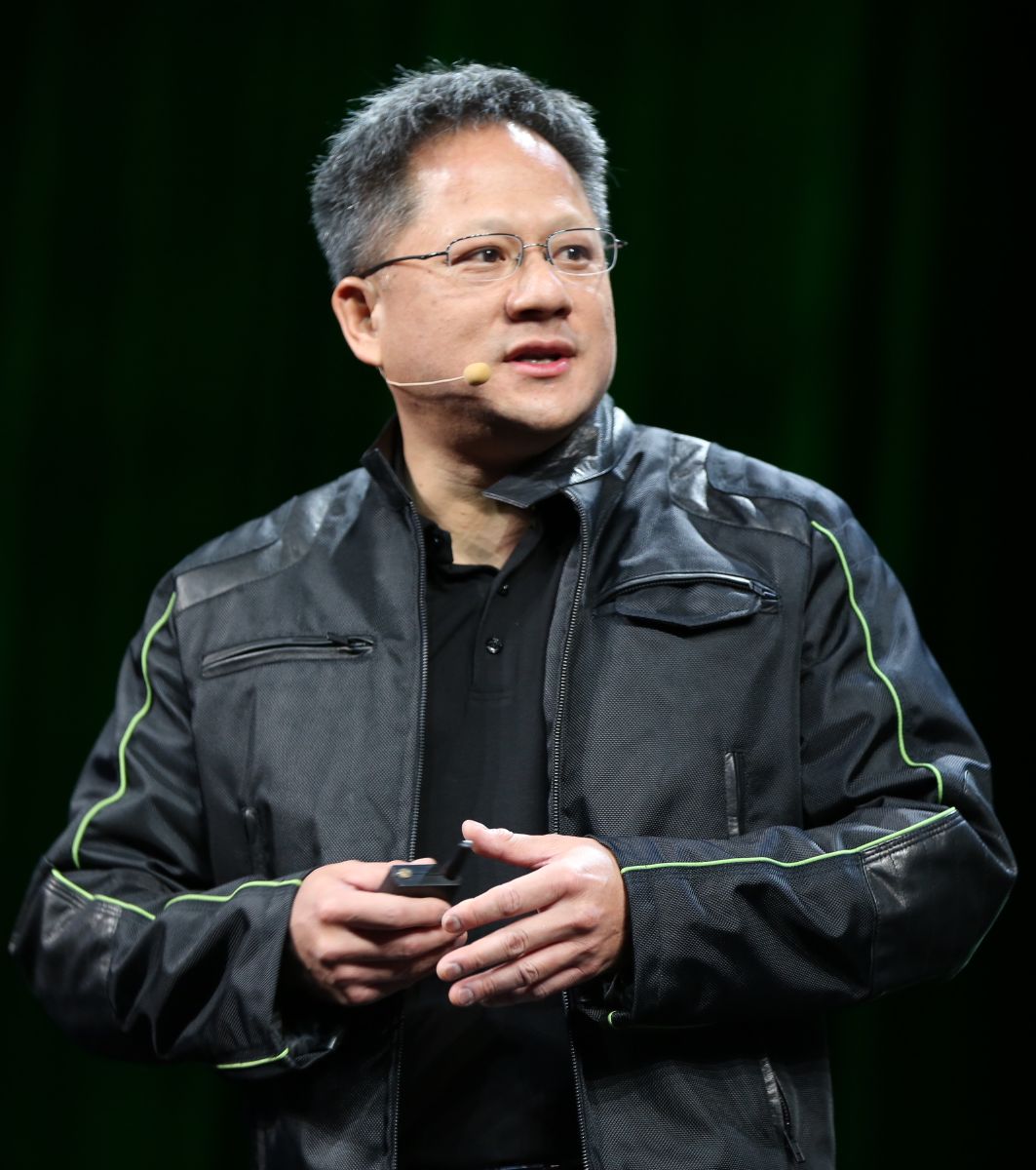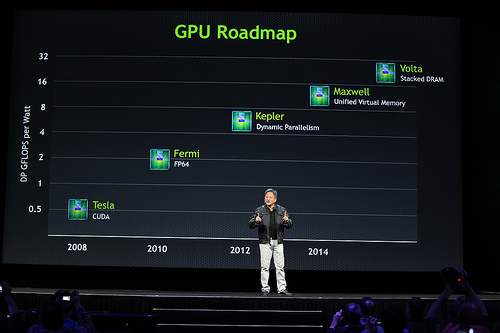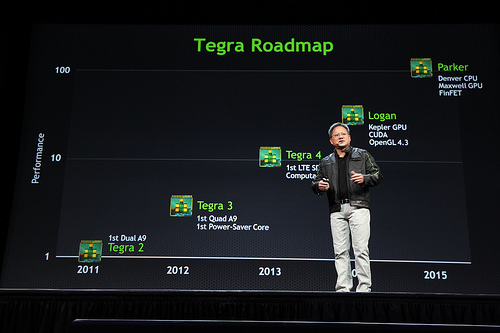Nvida Updates Its GPU Roadmap at GTC 2013
At GTC 2013, Nvidia CEO Jen-Hsun Huang outlined a future where "mobile, desktop and supercomputer technologies intersect in powerful and surprising ways".
At this year's GPU Technology Conference, Nvidia's CEO outlined the company's roadmap for desktop and mobile platforms and described how "GPUs are already finding their way into applications that were undreamed of a decade ago".
He also noted that last year's Kepler GPU architecture has been a "runaway hit for gamers" and underpins a "new generation of hyper-efficient supercomputers" including the GeForce GTX Titan. The roadmap aims to "put the efficiency and speed of our massively-parallel GPU architectures into an ever-broader array of devices" ranging from mobile to supercomputer.
Starting with Nvidia's desktop GPUs, Maxwell will offer unified virtual memory, providing CPUs with access to the speedy memory built into GPUs and vice versa. Following on from Maxwell will be Volta that introduces the idea of 'stacked DRAM' that piles memory modules directly atop the GPU cores and gives the GPUs access to a bandwidth of 1 TB/s or enough to move a full Blu-ray disc of content in 0.02 seconds.
With regards to mobile processors, Logan will pair ARM based mobile processors with Kepler GPUs and provide mobile devices with access to technologies such as PhysX, CUDA 5 and OpenGL 4.3. The Parker architecture will combine 64-bit ARM CPU cores with the next generation Maxwell GPU to provide server-esque functionality including the ability to "gulp down big chunks of data".
We've been impressed by the content and ambitiousness of the GTC presentation and are looking forward to both Nvidia's upcoming architectures and perhaps getting our hands on Jen-Hsun Huang's jacket! For a play-by-play from the keynote, check out our liveblog!
Contact Us for News Tips, Corrections and Feedback
Get Tom's Hardware's best news and in-depth reviews, straight to your inbox.
Tarun Iyer was a contributor for Tom's Hardware who wrote news covering a wide range of technology topics, including processors, graphics cards, cooling systems, and computer peripherals. He also covered tech trends such as the development of adaptive all-in-one PCs.
-
de5_Roy nvidia is really saying,"we'll get there when tsmc gets there. until then you'll just have to wait and buy our overpriced cards(gtx 650ti, gtx 680, titan)."Reply
the jacket was the real highlight!
nvidia doesn't have a capable or existent cpu to compete against hsa. build the cpu first, brag later. -
ibjeepr So Maxwell in early 2014 by the looks of it. Glad I didn't wait.Reply
The mobile side of things likes interesting but not relevant to me. -
A Bad Day ReplyStarting with Nvidia's desktop GPUs, Maxwell will offer unified virtual memory, providing CPUs with access to the speedy memory built into GPUs and vice versa.
HSA vs Nividia's version vs Intel's CPU brute force...
Hm... -
gm0n3y Stacking the RAM directly on top of the GPU doesn't seem like a very good solution thermally. I'll be interested to see if the benefits outweigh the likely lower clock speed. On the plus side they should be much more efficient, running at lower voltages and clock rates.Reply -
memadmax At some point, Nvidia is gonna have to enter the x86 market, it would be great if they released a x86 Tegra chip....Reply -
nukemaster Not sure I would call the GTX 650 ti overpriced(I have one from MSI in my media center and its power consumption is VERY good for media playback and it can do some med/high setting gaming.).Reply
When on sale its not bad. I mean for a small bit more, you get the 7850(this thing rapes the 650 ti).
The card seems to fit right into its price range. -
nukemaster memadmaxAt some point, Nvidia is gonna have to enter the x86 market, it would be great if they released a x86 Tegra chip....I do not think Intel will let that happen.Reply -
nforce4max Interesting that they are going with stacked dram and the lower latency will make for a huge boost performance wise but likely to be very expensive considering yield. I wouldn't be surprised if the failure rate goes up with possible thermal tolerances with such a high IC density. I wonder what material they will be using for the IC to IC bonding and thermal interfacing between each IC...Reply -
bentonsl_2010 I The spirit of comic book fans here is how Kayla works in the naming convention. (For those of you wondering who Kayla is suppose to be)Reply
"NVIDIA also showcased an mITX-like board called Kayla, which features a Tegra 3 SoC and a low power Kepler GPU, presumably from Logan."
For those of you who watch the Xmen origins movie for wolverine she was his wife in the movie
"Kayla Silverfox was a mutant with the ability to persuade anyone she touched into doing what she wanted. Her sister is Emma Frost. After Logan left the Team X project and went back to Canada, Silverfox was tasked with keeping an eye on him. During their six years they resided together in a cabin high in the mountains, she manipulated him into a state of complacency with her power, calming him though the nightmares of the past. Kayla told him about a spirit who was tricked into being parted forever from his lover, the Moon. The spirit, whose name translated to 'Wolverine', was subsequently forced to look at the Moon forever and never be with her again. Kayla and Victor Creed faked her murder with hydrochlorothiazide for William Stryker so he could trick Logan into participating in his Weapon X project. When Logan was about to get his skeleton injected with adamantium, he asked for dogtags bearing the name "Wolverine", inspired by Silver Fox"
So since this is an off product supporting Logan it makes perfect sense to use his former wife as the name.


